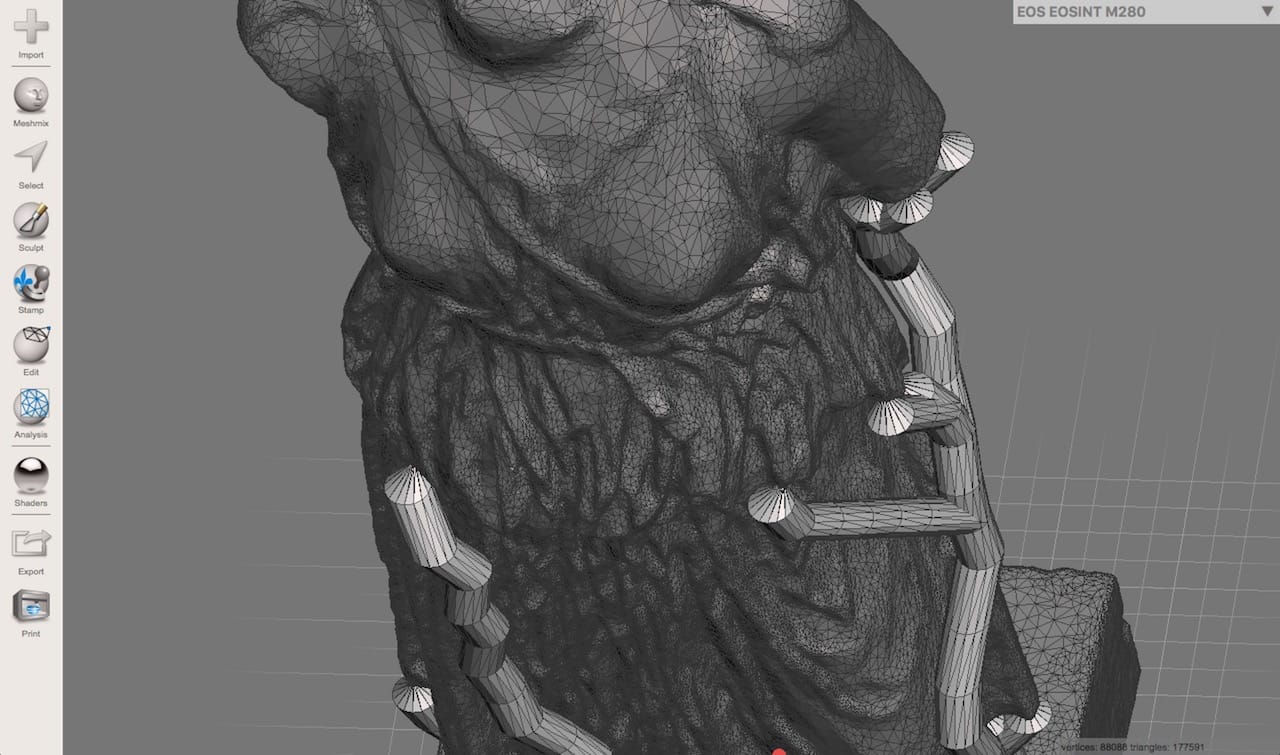
If you haven’t used Meshmixer, you should.
The free tool from Autodesk has been enhanced many times in its lifetime, now holding a great many functions required by 3D printer operators.
It’s not a 3D modeling tool as such, but rather a tool best suited to manipulating 3D models after they are created, typically for preparation for 3D printing. Sizing, orientation, mesh simplification and much more are easily accomplished with Meshmixer.
But its value goes well beyond the basics that you could find within many 3D print management systems. You can perform many advanced modifications to 3D models that are hard to find in any other system, particularly one that’s available at no charge like Meshmixer. Here’s their current list of features:
- Drag-and-Drop Mesh Mixing
- 3D Sculpting and Surface Stamping
- Robust Convert-to-Solid for 3D printing
- 3D Patterns & Lattices
- Hollowing (with escape holes!)
- Branching Support Structures for 3D printing
- Automatic Print Bed Orientation Optimization, Layout & Packing
- Advanced selection tools including brushing, surface-lasso, and constraints
- Remeshing and Mesh Simplification/Reducing
- Mesh Smoothing and Free-Form Deformations
- Hole Filling, Bridging, Boundary Zippering, and Auto-Repair
- Plane Cuts, Mirroring, and Booleans
- Extrusions, Offset Surfaces, and Project-to-Target-Surface
- Interior Tubes & Channels
- Precise 3D Positioning with Pivots
- Automatic Alignment of Surfaces
- 3D Measurements
- Stability & Thickness Analysis
I’ve used Meshmixer for years and propose that you really can’t operate a desktop 3D printer properly without having it handy.
It’s a relatively easy program to learn, if you haven’t already tried it, but if you have not, I strongly encourage you to try it out. Learning Meshmixer is not difficult and there are several places to learn:
The obvious place to start is Meshmixer’s own online manual, found here. This comprehensive set of web pages goes through each function in some detail.
There are other paid training options, including multi-episode Meshmixer video training from Honeypot (USD$79) and Udemy (USD$85).
I also recommend Maker’s Muse’s Meshmixer Playlist, which ccntains no less than 13 videos and 100+ minutes of training in total.
There are also many individual videos showing obscure techniques one can perform with Meshmixer. If you need to do any of the following, there is a video to show you how.
Adding Drain Holes (from Formlabs)
Reducing Polygon Count (from 3D Hubs)
Creating a Voronoi Model (From 3D Platform)
Optimizing Support Structures (from Extrudable)
Creating a Hollow Shell (from Embodi3D)
Painting Multicolor Models (from Autodesk Research)
Smoothing a 3D Model (from Packt)
Repairing a 3D Model (from Pinshape)
Importing DICOM data to create a 3D Medical Model (from Fundamental Radiology)
Cutting Meshes (from BI-3DT)
And finally you can try out the Meshmixer forum for questions and answer if you’re not into video.
If you choose to try Meshmixer – and you certainly should – there are plenty of online resources to help you on your journey.
Via Meshmixer

